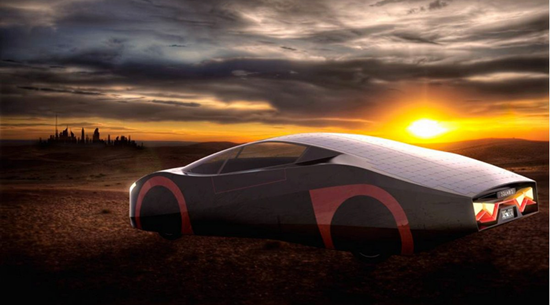
How would you like to see the invisible? Explore the ocean 5,500 feet below the surface? Own a solar-powered car? Yes? Then read on.
1. Solar-Powered Sports Car
The solar-powered car, Immortus, based on technology developed by Australia’s Aurora Solar Car Team, is a boutique custom electric car with components that you or a custom car shop assembles. The car, designed by EVX Ventures, has 75 square feet of photovoltaic panels that generate enough electricity to give the car 248 miles worth of range. Since the car is new, it's still pretty pricey - US$370,000, but EVX is out in front trying to bring solar-powered autos to market.
2. Deep-Sea Diving
This three-person, underwater craft - C-Researcher - is the latest from submersible designers at the Dutch company U-Boat Worx. The fully transparent vehicle is able to dive to 5,577 feet and comes equipped with a range of scientific instruments, including sampler arms, imaging sonar, a HD video camera system, and other components that measure water conditions, create 2D/3D underwater maps, and analyze the deep-sea environment.
3. Duckweed Survival House
This floating emergency shelter could save lives during floods, tsunamis or other disasters at sea. It comes from industrial designers Zhou Ying and Niu Yuntao, who won the 2015 Red Dot Award for their concept. The shelter can be quickly inflated and remains stable in high seas thanks to a keel that also houses a gas tank and a filtration system that makes ocean water drinkable. Several shelters lashed together provide extra stability.
4. 3-D Printing 10 Materials at Once
Most 3-D printers print one material at a time, building it up layer-by-layer into a solid object. But researchers at MIT have developed a 3-D printer capable of printing 10 different materials on the same job. The MutliFab printer, which was built using off-the-shelf components, sprays microscopic droplets of photopolymers through inkjet print-heads that solidify into one of 10 different materials.
5. Algae Foam
Toxic algae blooms are an increasing problem in lakes and oceans. Now researchers from bioplastics firm Algix and Effekt have found a way to turn waste algae into a foam they call Bloom Foam. The material could be made into yoga mats, sporting goods and toys.
6. TriFan 600
The world's first commercial plane designed to take off and land vertically like a helicopter could be on its way. XTI Aircraft Company of Denver has launched a crowd-funding campaign to develop its TriFan 600, a five-passenger jet able to fly as high as 30,000 feet at 400 mph for a distance of 800 to 1,200 miles. See the video here.
7. Human Electric Trike
Now here's a novel way to get around. The GenzVelo, is a high-tech electric trike that comes with a power-assist motor. It has a range of 75 to 100 miles on a single battery charge, but can go much farther on pedal power. [GenzVelo website]
8. White LEDs that Flex
Researchers at the National Chiao Tung University in Taiwan have a found way to use inexpensive, off-the-shelf parts to create white, flexible LED lights. The device was made from 81 blue LED chips mounted onto a copper foil, which was covered in a layer of yellow phosphor film. The film turns the blue light a yellowish-white and the flexibility of the device could find purpose in curved TV screens or wearable displays.
9. Visualize Wi-Fi
This app allows you to see the otherwise invisible world of Wi-Fi signals. The app, called The Architecture of Radio, was developed by Richard Vijgen, who wanted to shed light on the unseen infosphere.
10. Micro Fish Swim In Your Bloodstream
These tiny robotic fish are smaller than the width of a human hair. They were developed by researchers at the University of California, San Diego, to sense toxins and then release nanoparticles that chemically bind with the toxic molecules to neutralize them.










No comments:
Post a Comment
Please adhere to proper blog etiquette when posting your comments. This blog owner will exercise his absolution discretion in allowing or rejecting any comments that are deemed seditious, defamatory, libelous, racist, vulgar, insulting, and other remarks that exhibit similar characteristics. If you insist on using anonymous comments, please write your name or other IDs at the end of your message.